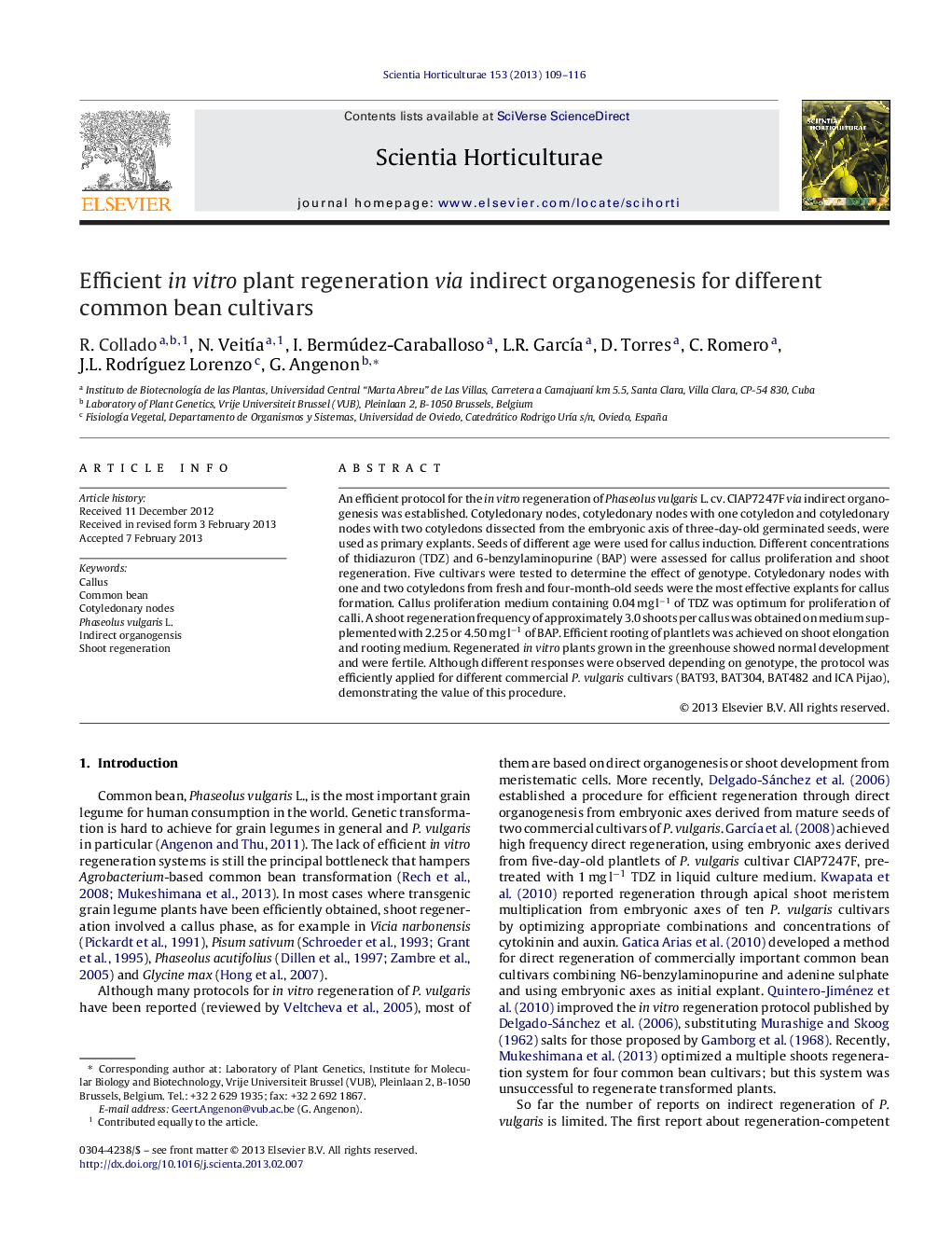| Article ID | Journal | Published Year | Pages | File Type |
|---|---|---|---|---|
| 4567203 | Scientia Horticulturae | 2013 | 8 Pages |
An efficient protocol for the in vitro regeneration of Phaseolus vulgaris L. cv. CIAP7247F via indirect organogenesis was established. Cotyledonary nodes, cotyledonary nodes with one cotyledon and cotyledonary nodes with two cotyledons dissected from the embryonic axis of three-day-old germinated seeds, were used as primary explants. Seeds of different age were used for callus induction. Different concentrations of thidiazuron (TDZ) and 6-benzylaminopurine (BAP) were assessed for callus proliferation and shoot regeneration. Five cultivars were tested to determine the effect of genotype. Cotyledonary nodes with one and two cotyledons from fresh and four-month-old seeds were the most effective explants for callus formation. Callus proliferation medium containing 0.04 mg l−1 of TDZ was optimum for proliferation of calli. A shoot regeneration frequency of approximately 3.0 shoots per callus was obtained on medium supplemented with 2.25 or 4.50 mg l−1 of BAP. Efficient rooting of plantlets was achieved on shoot elongation and rooting medium. Regenerated in vitro plants grown in the greenhouse showed normal development and were fertile. Although different responses were observed depending on genotype, the protocol was efficiently applied for different commercial P. vulgaris cultivars (BAT93, BAT304, BAT482 and ICA Pijao), demonstrating the value of this procedure.
► Lack of efficient regeneration hampers genetic transformation of Phaseolus vulgaris. ► An efficient protocol for regeneration via indirect organogenesis for P. vulgaris was established. ► The protocol is applicable to five different commercial varieties. ► The procedure should be of great help to attain Agrobacterium-mediated transformation.
